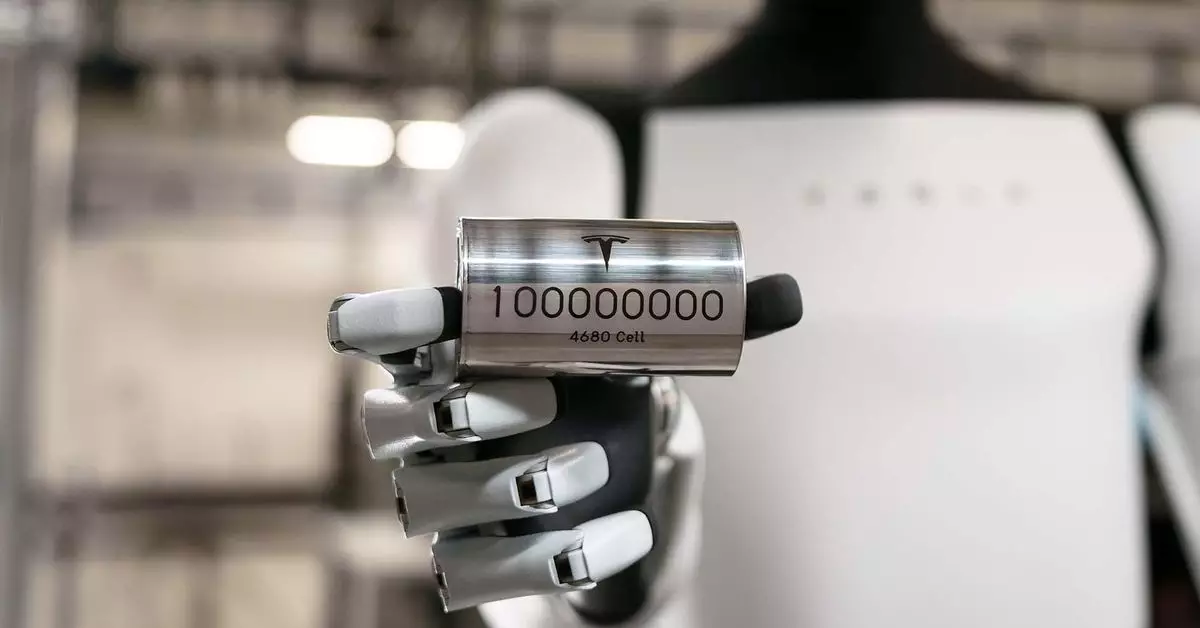As the electric vehicle (EV) market continues to grow exponentially, the technology supporting it—particularly EV batteries—plays a crucial role in determining the success of manufacturers and their vehicles. One of the most talked-about innovations is Tesla’s 4680 cylindrical cell technology, which has garnered both intrigue and skepticism within the industry. A recent discussion involves Robin Zeng, the founder and chairman of Contemporary Amperex Technology (CATL), the world’s leading producer of EV batteries. Zeng’s criticism of Musk’s technology raises questions about the future viability of Tesla’s ambitious battery plans.
Zeng’s assertion that Musk’s 4680 cell technology “is going to fail and never be successful” points to a fundamental skepticism about the direction in which Tesla is headed. Zeng highlights an encounter with Musk during his visit to China, stating they engaged in a “very big debate” about battery technology. The suggestion that Musk “doesn’t know how to make a battery” reflects a broader industry concern regarding Musk’s grasp of the intricate engineering that underlies battery production. This critique challenges the narrative that Tesla is solely leading revolutionary advancements in electric vehicles.
The 4680 cells, Tesla’s flagship battery product, have been touted for their “five times” greater energy capacity compared to traditional battery cells. This claim, along with the announcement that Tesla reached a production milestone of 100 million cells, creates an aura of significant technological progress. However, underlying challenges persist. A recent report indicates that Musk has placed a year-end deadline on the team tackling cost and production issues with these cells. This raises a crucial concern: is the ambitious timeline realistic, or is it another instance of overpromising that Musk has been criticized for repeatedly?
While Tesla endeavors to innovate with its cylindrical batteries, CATL takes a different approach by specializing in lithium iron phosphate (LFP) batteries. These batteries are utilized in a range of electric vehicles, from Chinese Tesla models to American Ford EVs like the Mustang Mach-E and F-150 Lightning. LFP batteries are known for their stability and safety, albeit with generally lower energy densities than Tesla’s cylindrical cells. Yet, as the EV landscape matures, the effectiveness of different battery technologies will be tested, and consumer preferences may shift based on range, cost, and reliability.
Zeng acknowledges Musk’s strengths in areas such as software and hardware but cautions against his tendency to underestimate development timelines. This feature of Musk’s approach could lead to disillusionment among investors and consumers alike if promised technologies fail to materialize as expected.
The debate surrounding Tesla’s 4680 cylindrical cells encapsulates the broader conversation about the future of battery technology in the EV market. With leaders like Zeng openly critiquing Musk’s approach, it is evident that the path to advancement is fraught with challenges—both technical and strategic. As competition heats up, the industry will closely watch how companies navigate technological uncertainties, the balancing of ambitious timelines, and market demand. The outcome will shape the course of electric vehicles for years to come, making this conversation an essential focal point for anyone interested in the future of sustainable transport.


Leave a Reply